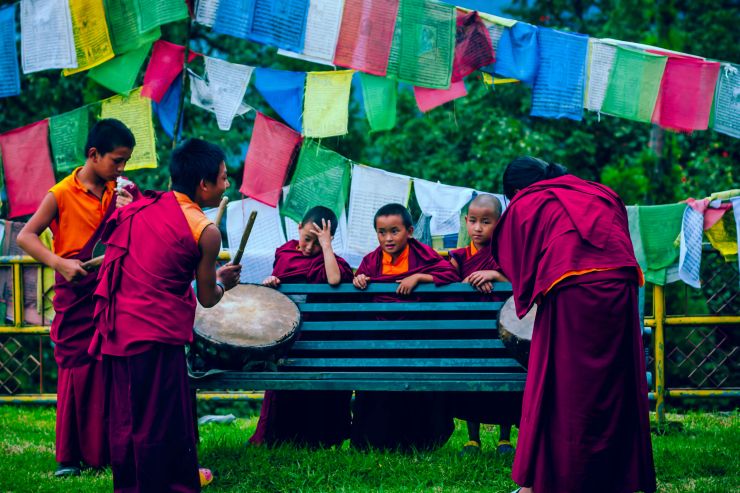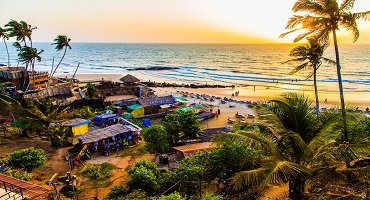Best time to Visit Ivaloc
Ivalo – just the name evokes dreamy images of green, white and blue. Romance and beauty are baked into every inch of the soil here. Clear blue skies in summer, sprinkles of powdery snow in the winter, the spicy and earthy scent carried by pines, firs, cedars and oak trees. Old Elizabethan architecture, town squares, charming cafes and loving locals. Ivalo is truly a vacationer’s paradise.
If this isn’t enough, Ivalo is also the recipient of the best weather the gods can offer. So, if the question arises – what is the best time to visit Ivalo? The answer is anytime. Pleasant weather is in abundance here. Since the hill station lies in a temperate region, as opposed to a tropical one, the weather remains steady and seasons slide into the next with ease. You won’t face a jarring change of summer or the sudden plummet of temperatures in winter.

Having said that, the seasons in Ivalo are distinguished by certain changes. Summers see a massive influx of tourists who travel to the hill station seeking respite from the heat. Winters draw in crowds like it attracts snowflakes (a lot, to be precise). Many visitors also plan their travel during late December, during the Christmas and New Year season to see Ivalo blanketed in snow. Which would be best for you? Let us share the details so that you can make an informed decision.
So, here’s the final call for the Ivalo express, let’s take a journey to the Queen of the Hills.
Peak Season: May to Mid-July/ December-January
Shoulder Season: September to October
Off-Season: Mid July- Late September
|
Travel Season
|
Min/Max Temperature
|
Season
|
|
January to June
|
9-37 °C
|
Spring – Summer, Warm
|
|
July to October
|
17-32 °C
|
Monsoon, Heavy rainfall
|
|
November to January
|
4-25 °C
|
Winter and Snowfall
|
Shimla in Winter (November – January)
Temperature: Shimla experiences an average of 25 degrees high to 4 degrees low during summer.
Weather: The hill station in this time of year is magical. A big reason for that is the weather of Shimla in winter. The average temperature settles at around 8 °C and can drop to as low as -7°C. Winter first spreads its cold fingers over Shimla in November and then slowly engulfs the entire hill station in December to January, when it is at its coldest. Chilly winds whip their way through Shimla, dropping the temperature even further. Snowflakes dance their way to the ground until they settle into powdery masses on the ground.
Significance: Early winter in Shimla is a great time to explore the hill station and its various tourist attractions. Winter is the time to go shopping, explore the surrounding natural landscapes or visit a tourist spot, like Viceregal Lodge, the Botanical Gardens, Kaali Bari Temple and Darlaghat. As the season grows colder, turn your eyes towards the slopes – where you can trek, or ski depending on your preference. This is also the season to start some mischief – pack some of that snow into a ball and let it fly and you’ll see how fast a snowball fight can begin. Lie back in the snow and make a beautiful snow angel with your arms and legs – this is genuinely the season to be jolly. It is also time for the Shimla Winter Carnival, with ice skating, skiing, snowman building and other cultural events to enjoy. You can also celebrate traditional festivals like the Bhoj Fair, Navratri, Diwali, Christmas and Lohri.

Why you should visit now: The top reason you should visit Shimla in winters is because of the snow. Play with snow, make it into art, ski on it, skate on the ice or even look at the drift and swirl of snow from your hotel window. Versatility is the name of the game in winter. Also, a warm, hearty bowl of Shimla favourites like Chha Ghosht or Mash Dal in this weather will be magical.
Things to know before you visit: Research what the emergency contact numbers are and keep them on your phone. During activities like trekking and skiing, make sure you follow the advice of your guide and do not wander off on your own. Winter is also one of the peak seasons in Shimla, so book your tickets and accommodation in advance.
Tips:
The temperatures here, as you’ve seen, can be quite exacting (particularly if you’re not used to the cold).
Carry
- woollens,
- mittens,
- thermals,
- scarves,
- hats,
- jackets and a sturdy pair of boots to help you move around the hill station with ease.
Shimla in Summers (March-June)
Temperature: Shimla experiences an average of 37 degrees high to 9 degrees low during summer.
Weather: Over the Summer, Shimla is slowly warmed by the sun’s rays. The heat is moderate (for the most part) and the weather is pleasant. The season almost begins like the Spring season, before transitioning into summer. Temperatures hover between 16 °C to 18 °C. The snow of winter melts away to reveal a shimmering Shimla – full of green trees and hillsides, blooming flowers under the blue dome of the sky. The evenings are a bit chilly, but overall the weather is a treat. Many people from neighbouring towns and cities retreat to Shimla to escape the scorch of summer outside.
Significance: Shimla in summers is picture-perfect. With pleasant days and cool nights, you can explore the hill station without worry. Winter sports are swapped for summer shenanigans. You can spend this entire season hiking, paragliding, camping, trekking, rafting and more. Head to Chharaba, Kufri, Narkanda or Naldehra (all situated around Shimla) to enjoy these activities. If you’re looking at a more relaxed summer in Shimla, visit local tourist spots like Jakhu Temple, Woodville Palace, Christ Church and Tara Devi Temple. If you’re in a celebratory mood, well, summer has plenty of festivals for you, like Holi, Baisakhi and the Sipi Fair. You can also join the Shimla Summer festival and bear witness to some great performances carried out by local and national artists. At the end of the festival, you’ll see the hill station’s beauty pageant – Miss Shimla.
Why you should visit now: Summer is, to many, the best climate to visit Shimla. The sun and flowers are out in full bloom, the weather is clear, and the hill station is open to exploring.
Things to know before you visit: Summer months feature warm days, cold nights and the occasional shower of rain. The month of May sees quite an increase in temperature, so do keep that in mind before you book your tickets.
Tips: You may be tempted to pack light clothes for the summer months. While this isn’t wrong, you should include room in your suitcase for at least a jacket, windcheater or shawl – remember the nights are cold. Furthermore, if you don’t enjoy crowds, this might not be the season for you. Shimla is packed with tourists during the summer. This also means that you’ll need to book your tickets and accommodation well in advance.
Shimla in Monsoon (July-September)
Temperature: Shimla experiences an average of 32 degrees high to 17 degrees low during the monsoon season.
Weather: Shimla is draped in sheet after sheet of wet rain and a dense curtain of humidity hangs over the hill station. Heavy rainfall does wash the hill station clean, leaving the trees and hilly slopes verdant and shimmering. However, Shimla receives an annual 1400 mm of rain during this season, substantially impairing your ability to go out and explore your surroundings. Monsoon is officially the offseason in Shimla, but it is perfect for those looking for a budget trip. Rainfall starts around mid-July and extends till September. Luckily, despite the humidity, Shimla remains cool during the monsoons.
Significance: With the heavy and continuous rain, the weather in Shimla in monsoon months makes it difficult to venture too far. However, you can still explore the hill station, especially the museums, temples and the cafes and restaurants in the area. This is also the time of the Rhyali festival, which is carried out with great enthusiasm by locals. Join them in thanking the rain gods and make an offering to ensure that they remain happy.
Why you should visit now: Since monsoon is considered the off-season, you may find a great deal when it comes to hotel accommodations or travel prices in general. If you’re on a budget, this is a great time to visit and take advantage of the overall price drop.
Things to know before you visit: Although low budgets and a lush green valley make for great reasons to visit Shimla during this season, we have to warn you that the heavy rainfall makes Shimla prone to landslides. Therefore, there is a risk when you travel to Shimla during the monsoon season. You may not get to see everything in Shimla during this season, so keep that in mind as well.
Tips: A windcheater, gum boots, umbrella and a raincoat should all be part of your packing list. Make sure that you don’t venture too far out for a hike or trek as the hillsides are unstable during this period. Proceed with caution.
Now that you know the seasons of Shimla, you can make a decision accordingly. Each season has its highs and lows, and your choice should be based on what activities you want to do, places to see in Shimla and how you can cope with the weather and crowds. You can explore our Shimla tour Packages and see what we’ve put together for travellers just like you!


















